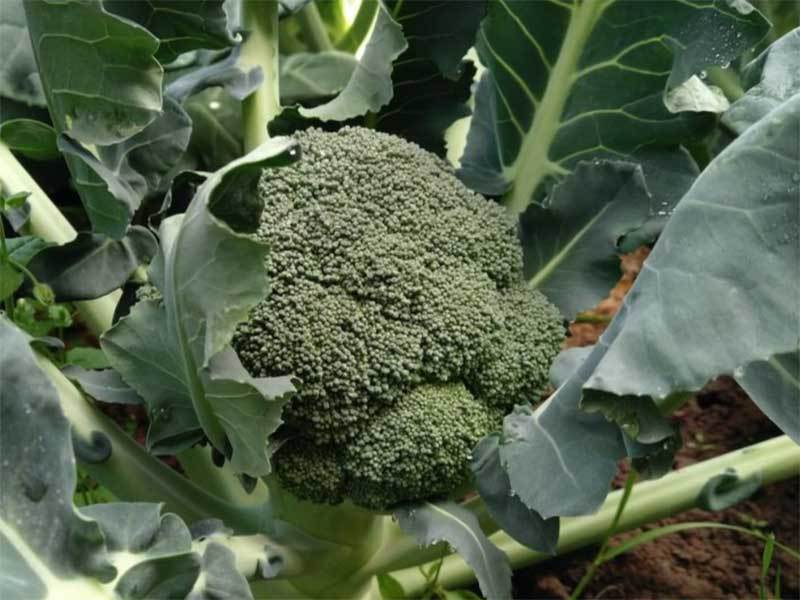The Ultimate Guide to Growing Broccoli in Texas - Wilson Garden
Preparing for Planting
Selection of the Right Location
Broccoli is a sun-loving vegetable. It requires 6 hours of full sun each day. So select a spot with morning sun and afternoon shade. Keep your broccoli patch away from water collects areas. This can lead to root rot in the state's clayey soils.
Soil Preparation
The soil pH should be 6.0-6.8. You can add compost or well-rotted manure. They will improve soil structure and nutrient content. Broccoli plants are heavy feeders. Add a slow-release organic fertilizer before planting broccoli in Texas.
When to Plant Broccoli in Texas?
Timing is critical. Sow seeds from February 1 to March 5 are best for spring broccoli. I suggest planting seeds from August 20 to September 20 for fall broccoli.
Don't plant too late or too early. Both of them can cause broccoli to bolt. They will produce yellow, bitter-tasting flowers. You should follow local planting calendars. Ensures sowing at the best time for a bountiful harvest.
How to Grow Broccoli in Texas?
Best Broccoli Varieties Suitable for Texas
You should choose heat tolerance varieties with a quick maturity time. For example, Packman or Premium Crop. Packman is celebrated for its versatility. It grows well in climates ranging from mild to hot.
Premium Crop has resistance to downy mildew. These cultivars are much better equipped to deal with Texas' climate swings than their standard counterparts. This ensures a higher chance of success.
Step-by-Step Planting Guide
You need to start broccoli seeds indoors 5-6 weeks before the last frost. Then, transplant your seedlings when they are about 4-6 weeks old. Make sure they have a strong root system and a few true leaves.
Spacing and Depth Considerations
Place your broccoli 18-24 inches apart in rows that are 24-36 inches apart. Ensure the crown of the broccoli level or slightly below the soil surface. This will provide sturdy support as the plant grows and develops its head.
Watering Techniques
Upon transplanting, give your broccoli deep, consistent waterings. It will establish a healthy root system. Using a soaker hose delivers water directly to the soil. This can minimize evaporation.
Broccoli generally requires about an inch of water per week once established. You should water more frequently during dry spells.

Caring for Broccoli Plants
Fertilization Schedule and Suitable Fertilizers
The soil quality of Central Texas, North Texas and South Texas are different. You will know the specific nutrient requirements with a soil test. Incorporate a balanced fertilizer when planting broccoli in Texas. Then, add nitrogen-rich fertilizer every three weeks as the heads develop.
Organic options work harmoniously with Texas's hot and dry conditions. For example, compost tea or fish emulsion. They promote consistent growth without burning the plants.
Mulching Techniques
Add a layer of mulch around your plant. This can regulate soil temperature and suppress weeds. Select a heat-reflective mulch can prevent overheating in summer.
Troubleshooting Common Problems
Addressing Nutrient Deficiencies
Pay attention to yellowing leaves or stunted growth. Fertilize as recommended, especially early in the growing season.
Pest Control
Aphids, cabbage loopers and harlequin bugs are common pests. Control them by using natural repellents and beneficial insects. For example, ladybugs or lacewings. You can also combat these critters early with natural deterrents. For example, organic sprays.
Disease Prevention
Clubroot and downy mildew are two common diseases. Rotating your crops annually and keeping a vigilant garden to prevent them. Promptly remove and destroy affected plants to prevent the spread if you spot signs of disease.
Harvesting and Storing Broccoli
Signs for Harvest
Harvest broccoli when the head is tight and dark green. The buds are starting to swell but are still tightly packed. If the head starts to loosen or the buds begin to show yellow, it’s overmature.
How to Harvest Broccoli in Texas?
Cut the main stem about 6 inches below the head by using a sharp knife. The plant will produce side shoots and extend your harvest.
Proper Storage Methods
You should wrap the heads in damp paper towels. Place them in a plastic bag with holes. Then, keep fresh broccoli in the refrigerator for up to two weeks. Blanch and freeze your broccoli for longer storage.
Additional Tips
Companion Planting
Ah, companion plants can deter pests and promote growth. Planting aromatic herbs, such as thyme, rosemary and oregano, will ward off unwanted bugs.
Dealing with Extreme Weather
Using frost cloth to protect your broccoli from sudden cold snaps. Cover plants with a protective enclosure overnight. Conversely, mulch heavily to retain moisture during the hot summer months. Consider providing temporary shade to prevent wilting.
Sustainable Practices
You should practice crop rotation. Incorporate organic matter into your soil. Compost plant waste and kitchen scraps. This can create natural, nutrient-rich amendments for your soil.
Explore more location-based guides in our Regional & Climate-Based Gardening collection.
Related Article:
how to grow lettuce in texas
growing asparagus in texas
growing okra in texas

